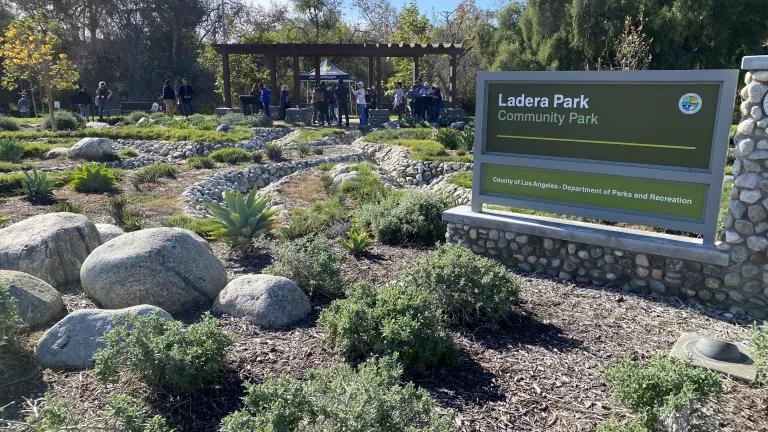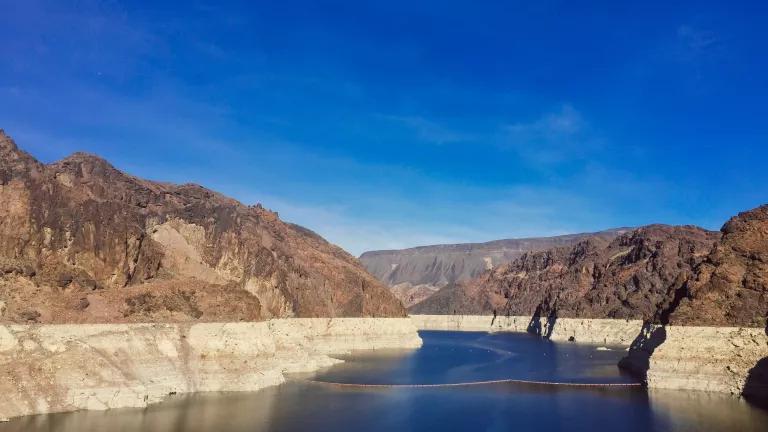NRDC, Defenders of Wildlife, the Planning and Conservation League, and The Bay Institute released the following statement today about the latest draft plan from the State of California for restoring the largest estuary on the west coast of the Americas and improving water supply reliability. Our groups, along with a coalition of business interests and urban water agencies, have proposed a conceptual alternative to the state's draft plan that holds significant promise for offering a cost-effective solution to these thorny challenges. We'll be reviewing the details of the state's latest proposal in the coming days and weeks to see how well it addresses the critical questions posed below:
California Begins Releasing Draft BDCP Documents
Today, the State of California will begin releasing the latest version of the Bay Delta Conservation Plan to the public. A coalition of environmental and business groups and urban water agencies has requested that BDCP analyze a portfolio alternative that includes a new, less-expensive Delta conveyance, science-based operations that reduce water exports from the Delta, and major investments in water efficiency, recycling, new South of Delta storage, and other tools. Support continues to build for analysis of this alternative from a wide variety of interests, but the BDCP agencies have yet to commit to whether they will analyze this alternative. In addition, the documents to be released will apparently focus on a single alternative, not the full range of alternatives that need to be meaningfully analyzed before identifying a proposed project.
In July 2012, five major environmental groups identified the key elements of a successful BDCP plan. We want to see BDCP succeed, and we’re looking forward to reviewing the state’s plan and evaluating it against these criteria:
- Does the plan reduce reliance on the Delta and invest in alternative water supplies like recycling and efficiency, as required by the Delta Reform Act of 2009?
- Does the plan reduce exports from the Delta and provide the kinds of flows that the best available science and the BDCP agencies’ own analyses demonstrate are necessary, at least until salmon and other native fish recover?
- Does the plan have a scientifically rigorous adaptive management program, based on enforceable biological goals and objectives that are necessary to achieve recovery of native species in the Delta and restore the Delta ecosystem?
- Does the plan have a reliable financing mechanism that ensures that the contractors pay for the full costs of any new facility and all mitigation associated with it, as well as contributing to the funding of environmental restoration programs?
Our colleagues at the Nature Conservancy recently wrote an op-ed in the Sacramento Bee that emphasizes many of these same points.
In addition, we will be closely reviewing the effects analysis and other elements of the plan to see if the major scientific flaws with prior drafts have been remedied (the so-called “Red Flag” problems identified by the state and federal wildlife agencies, as well as the scientific problems identified by independent peer reviews by the National Research Council and other reviewers).
It’s premature to say whether the planning documents that the state will release this week meet these criteria. It’s not premature to say that, given BDCP’s past “Red Flag” problems and the complexity of the issues being addressed, these documents need to be thoroughly reviewed by both the fish and wildlife agencies and independent science peer reviewers, in order to ensure a scientifically sound plan is put forward.
Ultimately, we want to see BDCP succeed, and select a project that is environmentally and economically sustainable, consistent with the criteria we’ve identified. In order to do so, BDCP must meaningfully evaluate all of the alternatives, including our portfolio alternative, before selecting a project. We’ll see whether the new BDCP documents mark a significant shift in the right direction.



